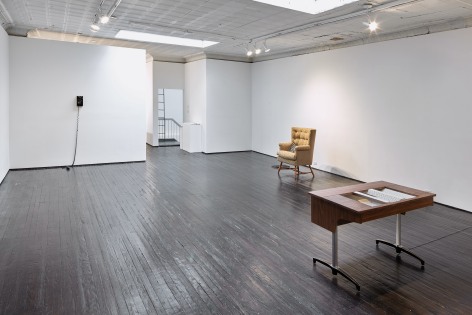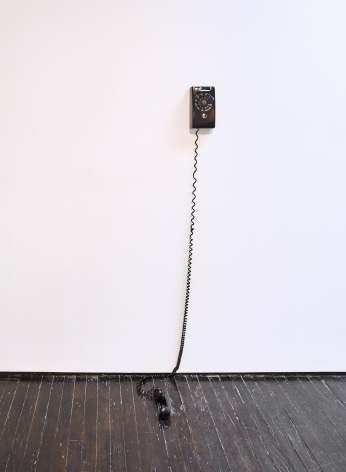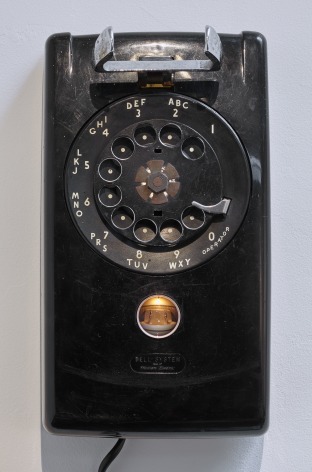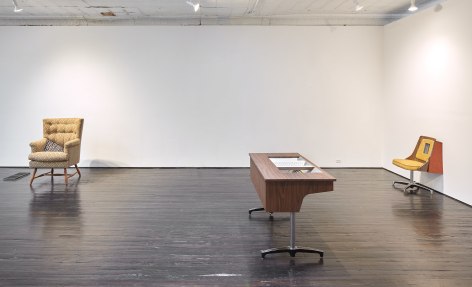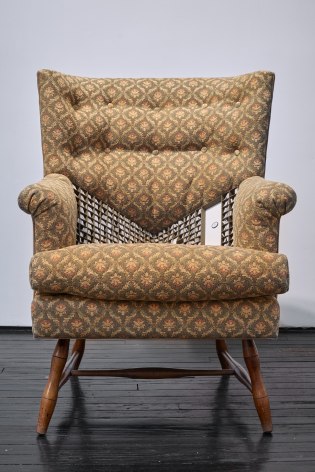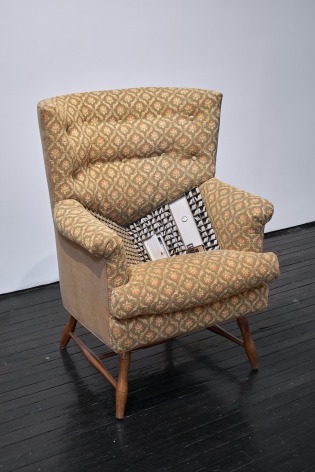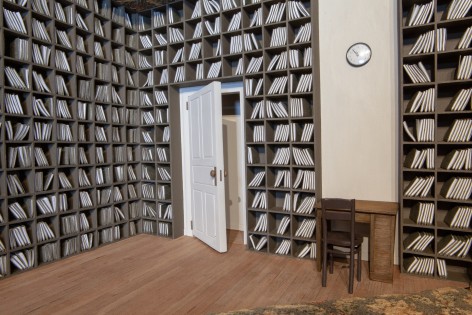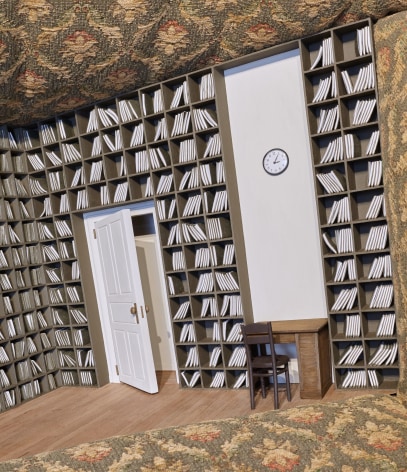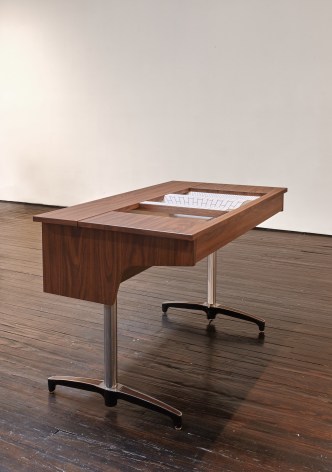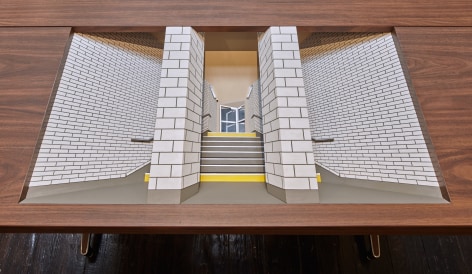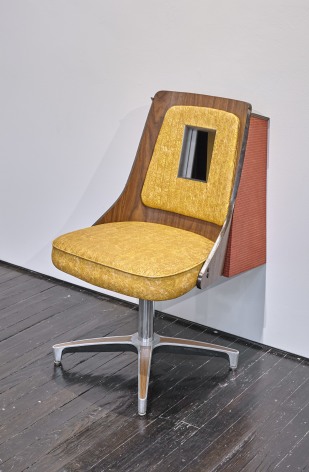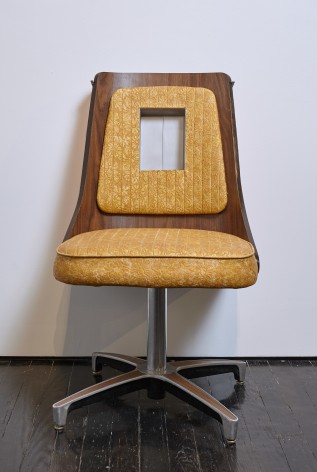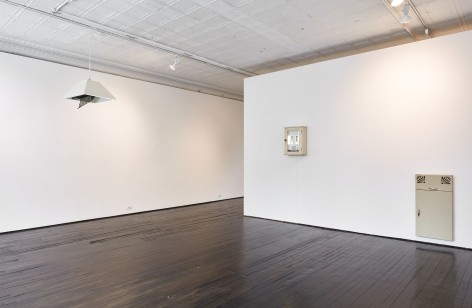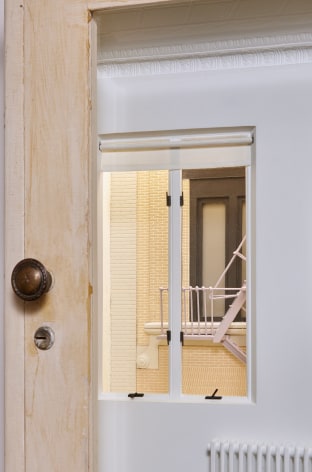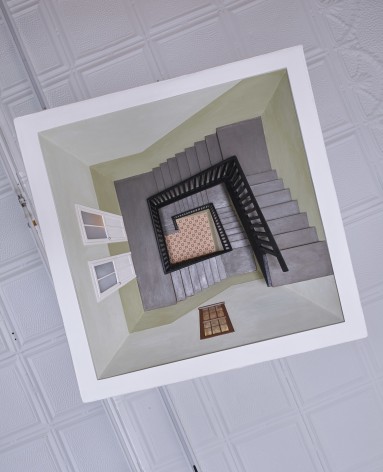Jack Hanley Gallery is excited to present Shadows on the Wall, Meredith James’s second solo exhibition with the gallery. In assembling this series of sculptures James found herself collecting and compiling over the span of years.
Some works began with something seen and photographed or with a persistent, nagging thought—with settings that, perhaps through a perfect symmetry or an anachronistic wrongness, have the potential to disorient onlookers and reposition them into a space where familiar things have become inexplicably alien. Others began with a rotary phone or a wing-backed armchair, household objects that have fallen out of step with time to linger in cinematic, rather than personal, memory.
Typically set in cities on the verge of change, film noir translates the transient into the psychological. So too, James seeks out places and things in various stages of disappearance or obsolescence. From such raw materials she creates a chair whose tufted back opens onto the shaft of a municipal building elevator or whose seat houses a miniature library where a clock hangs suggestively, a lampshade encasing a spiraling staircase whose precise fabrication creates an airlessness silently open to meaning.
While the carefully self-contained sculptures in this exhibition enclose worlds, they also share a point of view that makes them read like scenes glimpsed by a single person—say during a morning commute—interlaced with the imagery of that person’s inner life and collapsed into simultaneity, a freeze frame of thought.
